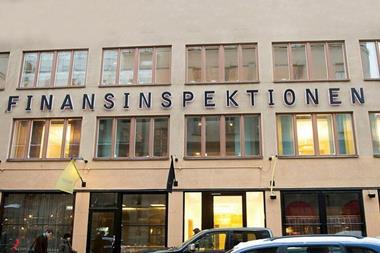Last year was a very busy one for RAS Immobiliare, the Italian insurer’s real estate arm. It was also its first year of operation; while RAS has been a long-standing investor in real estate, RAS Immobiliare effectively began its existence on January 1, 2004.
RAS is the second largest insurer in Italy and is 55% owned by German Allianz group – the RAS CEO Mario Greco has just been appointed to the Allianz board. Both companies operate in Italy but on RAS operates a real estate arm there.
In 2002 the RAS board of directors decided to dispose of two-thirds of its property assets which were sold to quoted real estate asset manager Pirelli for €1.7bn. The assets comprised residential and office property across Italy, with a total of more than 600,000m2 of real estate. As well as the assets, many of the staff responjsible for managing them were transferred to Pirelli.
As of 2004, the real estate operating company operating company, Proprieta Immobiliari, was replaced by RAS Immobiliare. The old real estate company had held large amounts of ungeared property on its own balance sheet and kept all property management activities in-house, which required maintaining a large body of staff. In contrast, RAS Immobiliare is streamlined and outsources property management.
The move was part of a plan to diversify risk in the portfolio, as well as making RAS’s real estate operations more dynamic. “RAS wanted to change from being a traditional real estate owner, with no active management, to become a energetic financial investor, using the best means of investment available to generate better returns, but still with real estate providing a low risk investment with a diversifying effect,” says investment manager Alessandro Clerici, who was recruited at the end of 2003 from Pirelli and who has previous experience of working in the US real estate market.
Clerici is part of a streamlined team, comprised of president Per Riches, general director Marco Plazzotta, portfolio manager Marco Grazzidonio and Giovanni Mallia, in charge of advisory and
valuation.
At present, RAS Immobiliare only direct ownership of real estate is its own operational portfolio, in Milan, Rome and Trieste, comprising just over 100,000m2 of real estate and four residential buildings. Management of these properties is outsourced to Pirelli Real Estate.
Other investments this year have been in an unlisted real estate fund created by RAS and in joint ventures with other real estate investors to carry out major long-term redevelopment projects.
The opportunity to create the fund came after new legislation from the Italian government last year which enabled the more efficient setting up of liquid, geared real estate funds, either public or
private.
In August last year, RAS Immobiliare received the necessary authorizations from the Bank of Italy to launch the Antares fund. This was seeded with €200m of equity from RAS alone and has the potential to gear up to give €400m of spending power. Clerici says he is working on a number of potential acquisitions for the fund.
“The new legislation has given RAS Immobiliare the opportunity to create a financial vehicle for real estate investment, which can offer liquidity if necessary,” he says.
The fund’s structure allows it to be opened up to new investors if RAS wants to sell down part of its stake to other investors if it wishes and to grow it with the addition of new equity. The 50% gearing (with the ability to increase this to 60% under the new rules) offers more flexibility and the opportunity to leverage returns, says Clerici.
The fund has an initial life of 15 years with the opportunity to extend the life by 3 years. It will be a core-plus investor (targeting gross IRRs of 12-14%) with a sedate minimum target IRR of 5%. While the fund is slated to invest mainly in office and retail property, but could expand that remit. “We could invest in logistics or hotels even,” says Clerici.
The Antares fund will invest in a number of opportunities across Italy (though not overseas as yet) with a focus in income producing properties, but RAS Immobiliare has also invested in a major long-term project, the regeneration of the Fiera di Milano area in Milan, which could deliver substantial development profits over the longer term.
“With the Antares fund and the Fiera di Milano project, RAS Immobiliare has a balance of income-producing projects, which will be income-generating immediately, as well as ‘chunky’ development projects. In the long-term the project will bring significant rewards,” says Clerici.
RAS Immobiliare has become involved in Fiera di Milano, one of the largest regeneration projects in Italy, and indeed in Europe, after the Citylife consortium won the contract to redevelop the area with a €523m tender offier.
CityLife is a consortium formed by Generali Properties (Generali Group), Progestim (Fondiaria Sai Group) and Ras Immobiliare, all real estate arms of insurance companies.
“This is the first time that three of Italy’s largest insurers have teamed up for a project like this,” says Clerici. “But with the size of the project and the level of investment required it made sense for these insurers to form a joint venture.”
The project will take 10-15 years to come to fruition and could have an end value of €3bn, says Clerici. “This is a long term investment and will bring long-term capital appreciation.”
As well as the three main investor partners, the CityLife jv has recruited Lamaro Group and Lar Group, two real estate companies operating in Italy and Spain. The project has been designed by architects Zaha Hadid, Arata Isozaki, Daniel Libeskind and Pier Paolo Maggiora
RAS - creating a strategy for real estate
Changes in Italian law to improve the structure of real estate funds have aided RAS Immobiliare’s move from being a conventional investor in real estate to being a financial player.
The rules were part of a long-term plan by the Economy Ministry to broaden the range of investment products on offer to Italians, while also making the products more accessible.
The real estate funds sector grew from e4.3bn at the end of 2003 to €5.5bn by the first half of last year and is set to grow further.
“Italy’s real estate funds have been dogged by a lack of visibility and understanding,” says Giulia Sartorelli, a real estate analyst at Banca Intesa’s Caboto brokerage arm. “While Italy’s real estate market remains one of the few European ones with some upside, Italians have only recently grasped the idea of using real estate as a financial instrument.”
This common perception, however, could be set to change thanks to the reform, which has been specifically designed to make the funds more flexible by offering investors more entry and exit options - hence creating a new breed of “elastic” closed funds.
The new rules also allow the funds to boost their leverage from 40-60% of their gross asset value.
Some critics, however, have pointed out that the new rules create the risk of a conflict of interest, since owners of real estate portfolios could spin them off into real estate funds, and then sell them to the public. The risk is that unscrupulous operators could be tempted to overvalue the real estate they spin off into the fund.
Before the new rules, owners of real estate funds could manage funds, but not stuff them with their own real estate assets. Not so, say members of the fund world, who believe the issue could only become a problem if funds specifically target retail and not institutional investors.
Italy’s real estate mutual fund market remains an immature industry compared to its European counterparts, given its relatively recent development. However, Moody’s Investors Service says it maintains a “cautiously optimistic” view with regard to the future growth of the Italian market based on current market trends, favourable fiscal treatment and various legislative changes.
“Italy is the latest of the major European markets to have launched a formal framework for real estate mutual funds within the spectrum of regulated financial products,” says senior analyst Enrico Bucalossi.
The genesis of this particular product in Italy has been a long and complicated process, with the original 1994 legislation undergoing various changes and additions in 1998, 2001 and 2003 - amendments that were broadly aimed at enhancing the average quality of assets included in such funds and at boosting the liquidity available to the real estate markets.
Following a four-year initial development period since the first real estate mutual fund was launched at the end of 1998, the Italian market is now entering a maturity phase.
Intensifying competition, increasing numbers of funds, the introduction of specialised funds, the acquisition of assets on leveraged capital and other trends, added to further flexibility in legislation, are forming the basis for a growth phase characterised by a broader range of asset management products, investment objectives and asset management strategies, says Bucalossi.
Although real estate mutual funds will remain a niche investment product, Moody’s believes that they will play a key role in channelling the cultural process through which the Italian real estate sector is started to be transformed from a consumer market into an investment market. “This structural change will depend on the capacity of new market players to transform real estate from a traditionally ‘speculative’ investment asset - with profits based principally on capital gain profitability - to a ‘cash flow’ investment asset in which profitability is based on an evaluation of the operating/rental yields,” Bucalossi explains.












No comments yet